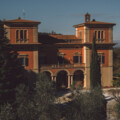Corte dei Salentini Unveils 'Tradition and Sustainability' in Virtual Showcase
In the midst of the serene landscape of Apulian countryside, inserting itself in the context of one of the most culturally authentic regions of Italy, standing on the fertile southern soil, surrounded by the sea-scented air, is the Corte dei Salentini artist residency. Situated within the intersection of natural and traditional, it is no wonder that in this edition the residency programme explores the theme of “Tradition and Sustainability”, proposed by curator Viola Moschettini.
During the residency, artists Sara Montani, Michael Adams, Giuseppe Q. Lupoli, and Luke Francis Haseler were invited to employ their respective artistic styles and expressions in order to investigate the intricate, fragile, and yet interdependent relationship between sustainability and tradition: “In this project, artists who are completely different from each other in terms of background, origins and reference language, come into contact with the land of Salento, and not only create works that reflect their way of communicating through art, but also become witnesses of a common feeling that blends with the culture of the place, giving rise to something that goes beyond.”
The online exhibition “Corte dei Salentini: Tradition and Sustainability”, available on follow.art from July 25th to November 30th, is the result of each of the artists’ efforts to delve into the complexities of Apulian heritage. The diverse selection of the residents in terms of both artistic practices (including photography, conceptual art, and painting) and places of origin (Italy, the United Kingdom, the United States) allows for a multispectral outlook on the theme.
To properly dissect the topic, some artists turned to legendary tales in order to tap into the underlying dynamics of heritage. Among them is Luke Francis Haseler, who dedicated himself to bridging Ancient Greek and Latin myths in his fresco “Daphnis Apulensis” (available in black and white print). The subject of the artwork references Daphne, a freshwater nymph sung by Ancient Greek folklore. The heroine was transformed into a laurel out of her own free will – contrary to the normally punitive metamorphoses present in Greek mythology. “She categorically rejects society's conventions, denying all her suitors due to her deep desire to remain <...> perpetually pure and in communion with the woods.” Another myth, inherent to the Messapic tradition, belongs to the same anthology – according to this legend, an Apulian shepherd Apulo is transformed into an olive tree. Unlike Daphne, who willingly accepted and even desired such a fate, Apulo suffered his conversion as part of a divine punishment. As Moschettini explains, “In both stories, nature prevails even in the face of the gods' contrary will.” In Haseler’s work, both stories come into synergy, reflecting the territory of Puglia with its roots in both Greek and Latin heritage.

The only Apulian participant of the 2024 programme, photographer Giuseppe Q. Lupoli also explores the tradition/sustainability dialectic through the lens of classical myth “reinterpreted in a contemporary key”. As the artist put it, “I sought to convey the cyclicity of life and nature, themes deeply rooted in the stories of our land.
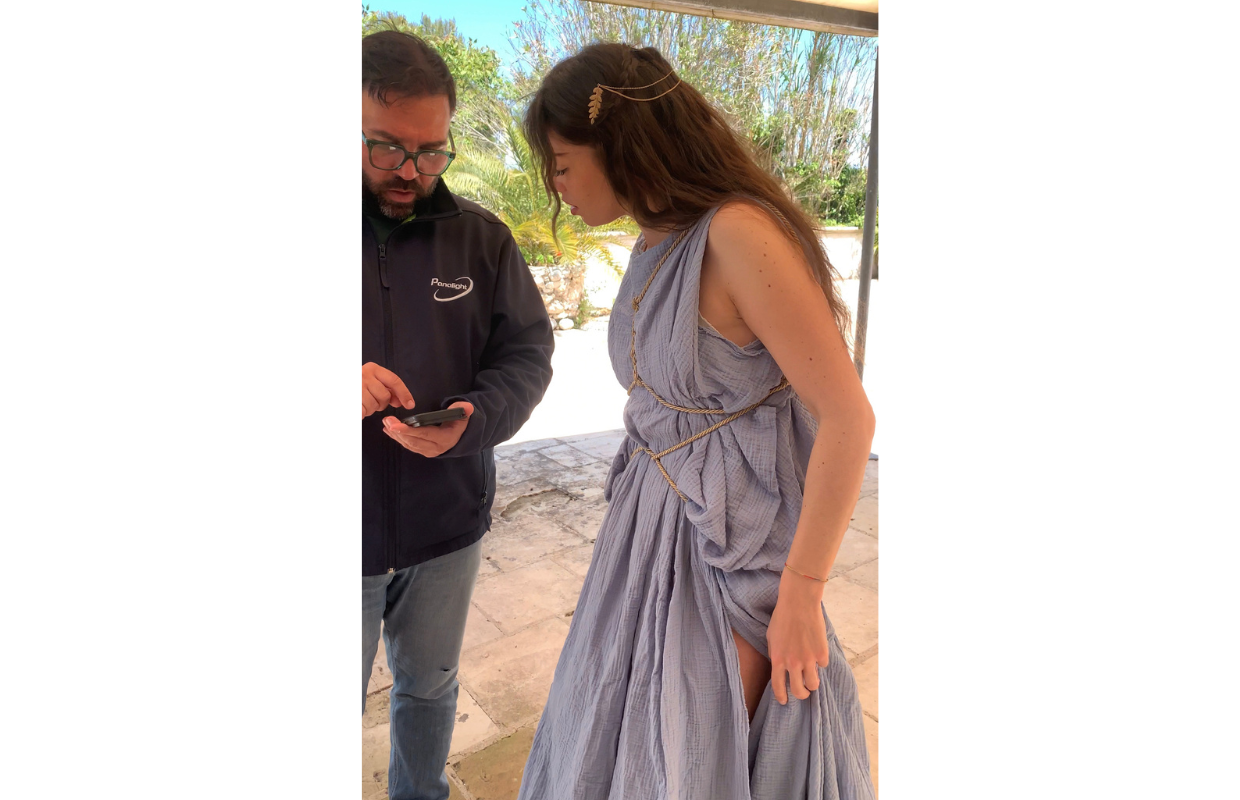
Sara Montani, an established multidisciplinary artist, renders this almost sacred connection to land by creating conceptual images of the things in which it is manifested – the sea, the wind, the sun. By using various media, including textile, resin, canvas, and wood, the artist strives to invoke a feeling of home, bringing about conceptual visions capturing fleeting moments in which we feel the sense of belonging. In the words of curator Viola Moschettini: “Encased in resin, the old garments - starting points for the selection - carry with them emotions, experiences, and fragments of the lives they have witnessed. The message from the lived experiences they carry with them becomes eternal, like in a folk tale, that also becomes part of the daily life of present and future generations. Sara Montani uses raw materials that hold a deeply personal and intimate significance, even greater than their intrinsic value. Emphasizing the importance of emotions in a society where utilitarianism and consumerism set the lifestyle trends, the exhibition project aims to create a moment of reflection and pause amid the frenzy. By reclaiming higher values, even differences in origin lose their significance”.
According to Montani, she was deeply moved by the landscape and nature of Lecce – the bright, almost blinding sunlight, the vigorous wind which changes its rhythm every day, and the pristine blue sky reflecting in the sea... These are the elements which inspired the “Li panni” series, crafted out of towels made of damask linen and personalized with initials of those they once belonged to. “‘The wind torments them, but the sun whitens them,’ the grandmothers used to say. Stiffened with resin and hung outside, secured by clothespins, they hark back to the work of skilled hands, of the young girls and women embroiderers of the early twentieth century.”
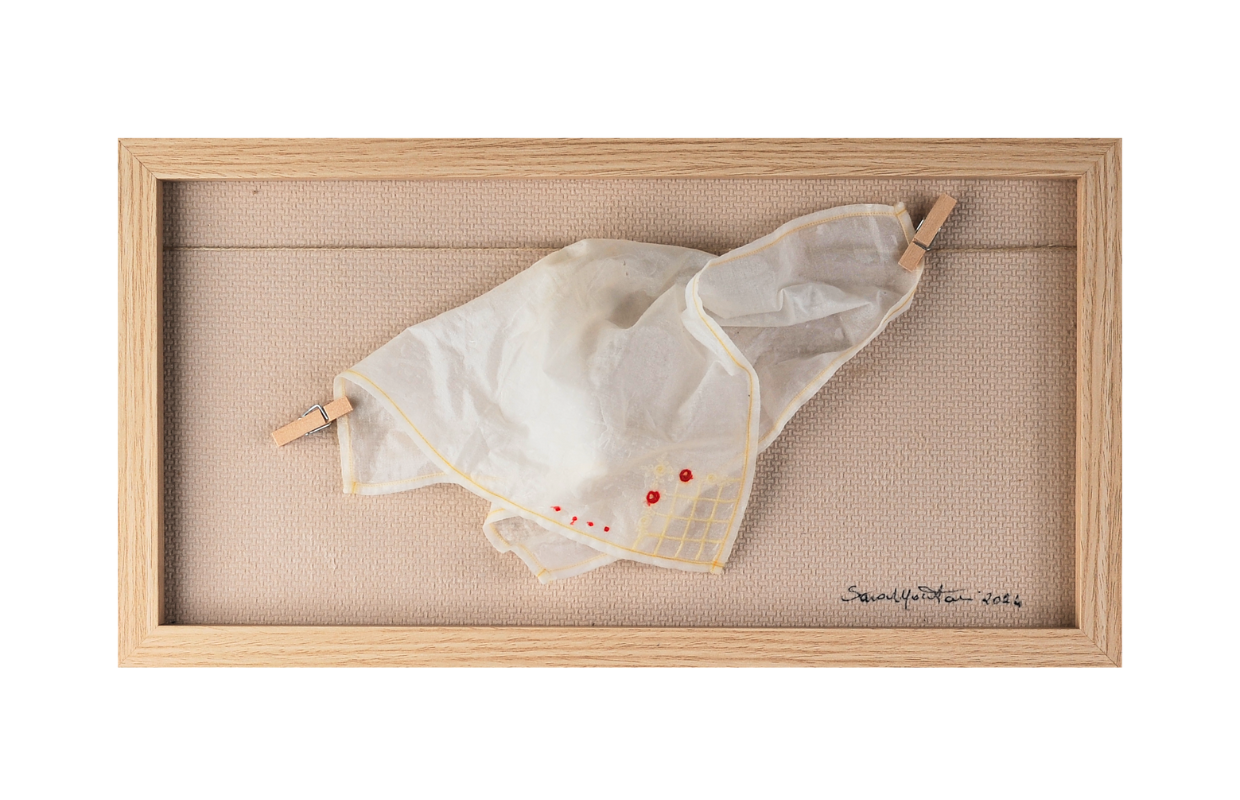
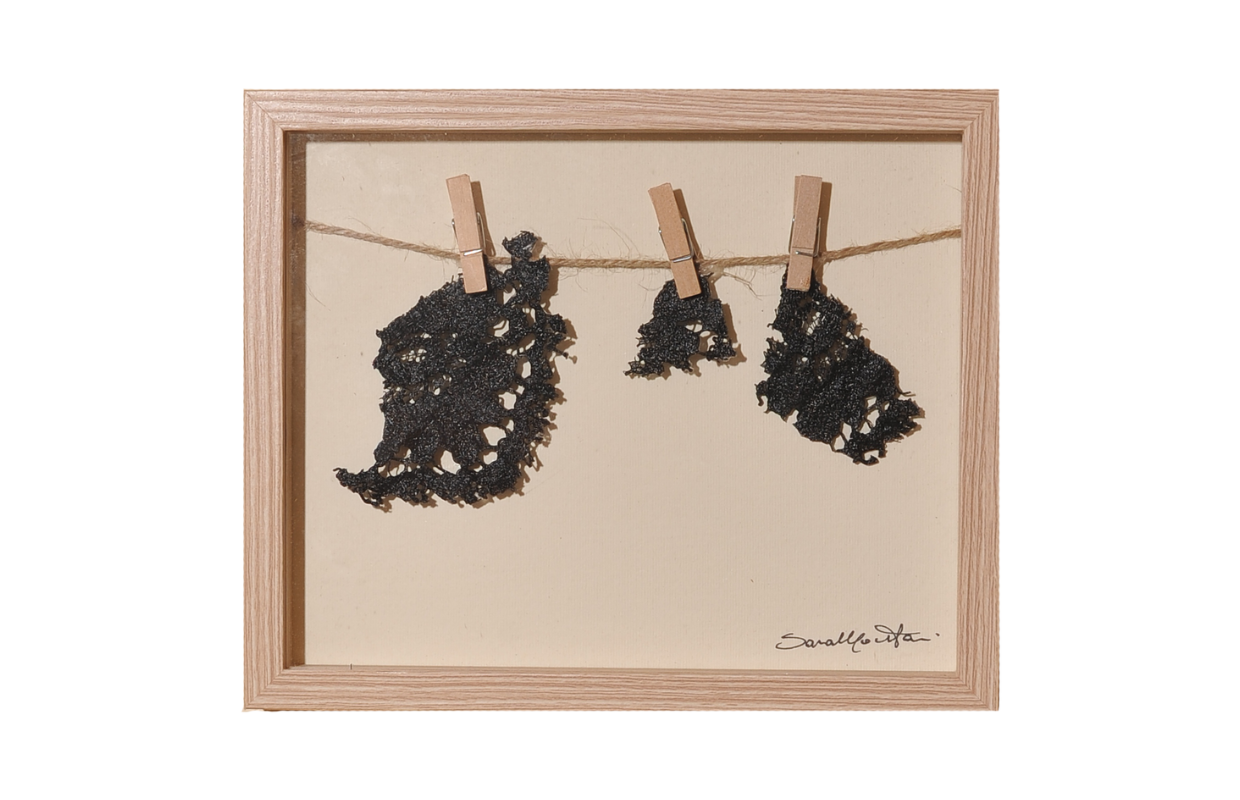
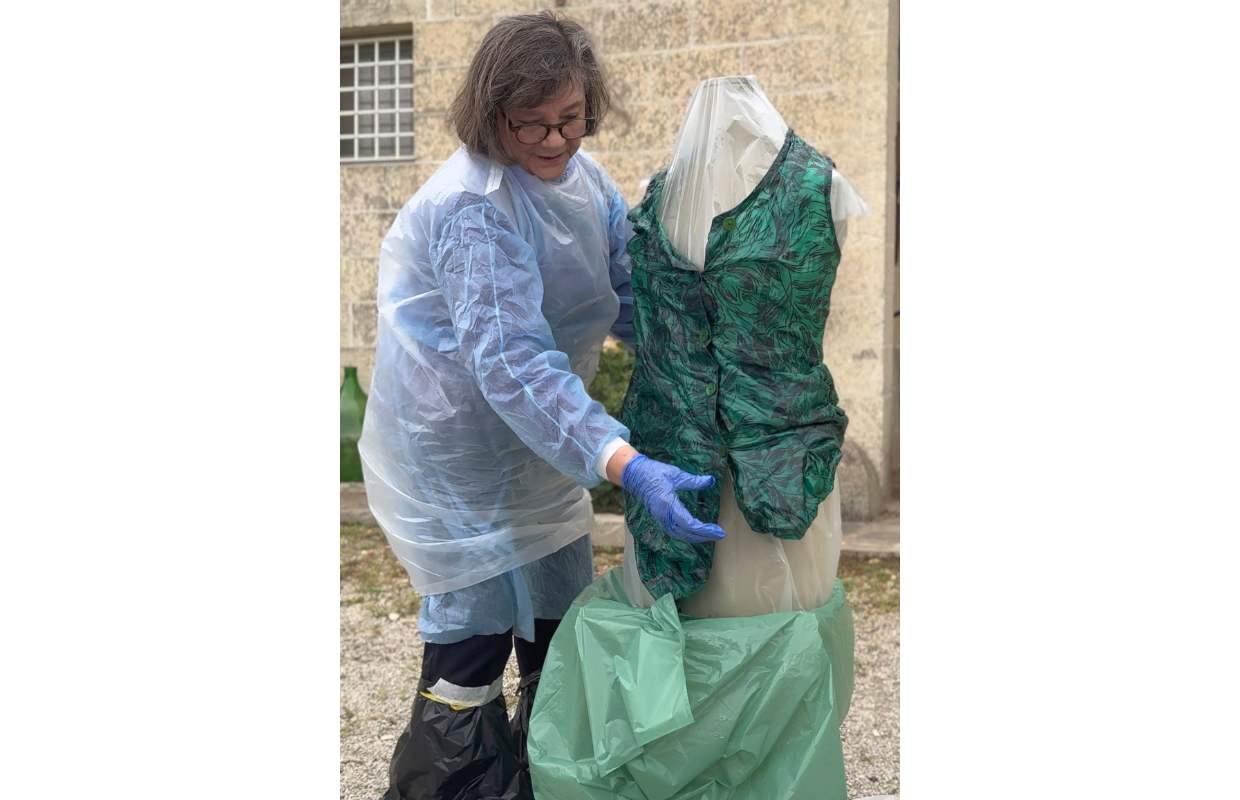
Influenced by Leccese natural and cultural heritage, Michael Adams, who predominantly works with oils and acrylics, created a series of three paintings celebrating Southern Italy. The “Windows to the soul” triptych features breathtaking sun-drenched cliffs, as well as the country’s easternmost lighthouse which holds a special place in the lives of locals. “The seaside cliffs showed a testament to standing the test of time while civilizations and generations of Italians have come and spent lifetimes here, and the lighthouse area has become a tradition of locals visiting the spot every new year as a chance to view the sun rise before anyone else in the country in celebration of life and the promises and ambitions of a new year, but also remembering their own past and ancestry,” Michael explained. The artist both literally and figuratively paints a beautiful picture of his time at the residency, connecting to the place and its customs: “While painting, the aroma of jasmine blossoms offering shade to my temporary workspace was so pleasant, and sipping the local caffe Leccese became my new favorite drink. As far as I was from home, I felt at peace and painting just came so easily. I knew I was there to make art, and any weight over my shoulder was instantly gone. Pure bliss.”
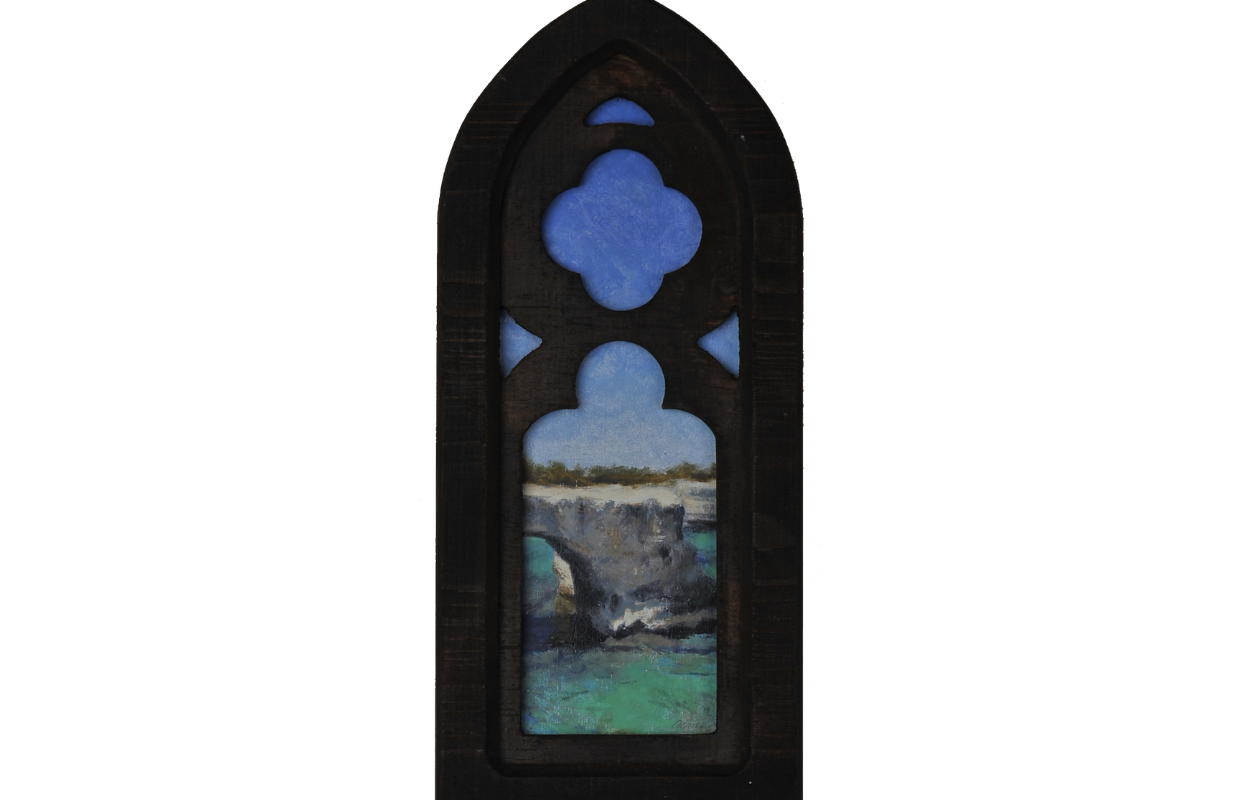
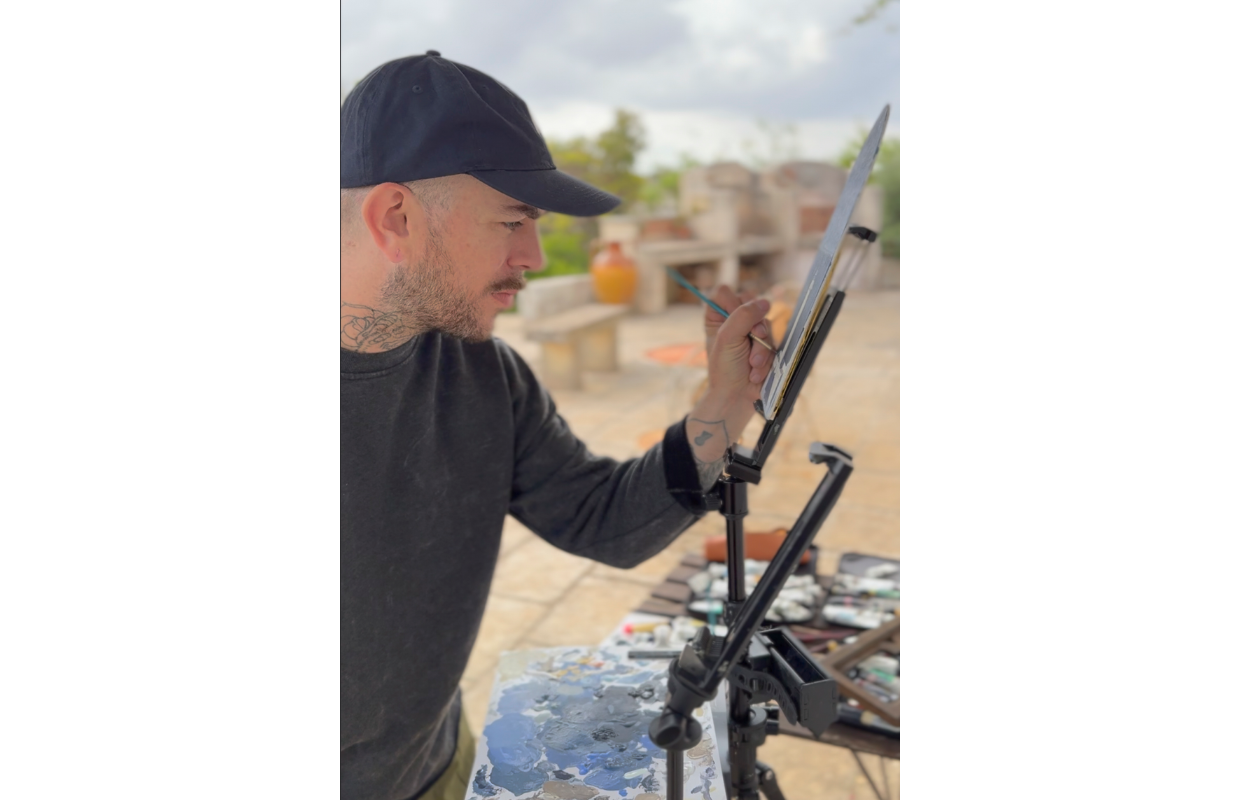
Apart from the 2024 residents, the online exhibition exclusively features participants of the previous edition of the programme, namely, Apulian artists Valentina Sergi and Giuseppe Pappadà. Their works add new layers of meaning to the development of the traditions and sustainability theme. Like Luke Francis Haseler, in her photographic series, Valentina draws inspiration from the classical tradition. The title of her project “A-Mors” alludes to classical languages, combining the Greek prefix "a-" which often means "without" or "not", and "moris," which could be derived from the Latin “mors, mortis" meaning "death." Thus, the six photographs narrate “a love story reminiscent of a Greek tragedy, so incisive to leave its mark.” The pale-faced, icy-eyed model, the seeping natural light, tinting the shots with a peachy-pink hue, evoke an ethereal, heavenly feel.
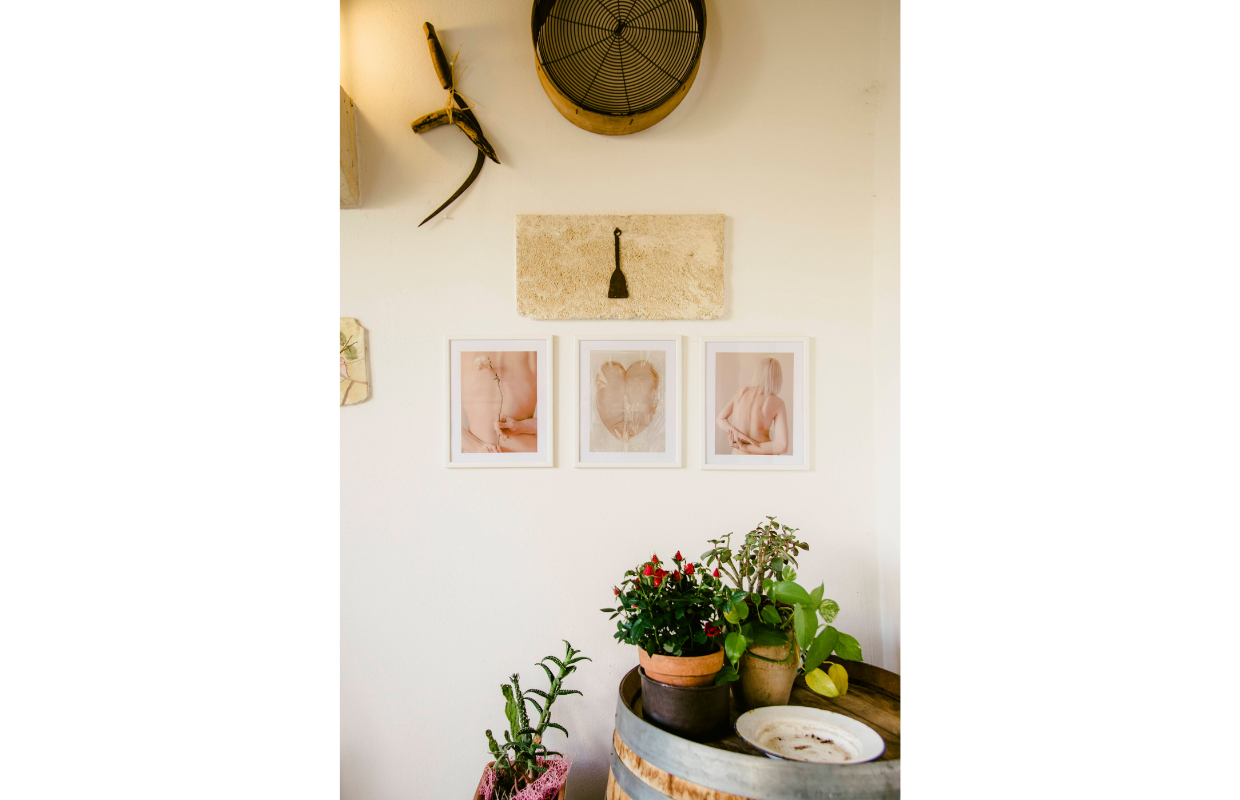
What really becomes symbolic of the synthesis of tradition and sustainability, history and nature, heritage and environment is the Lecce stone. It is this material which won Lecce the reputation of “Florence of the South” – thanks to its softness and workability allowing for intricate incisions and alterations essential to Baroque architecture prevalent in the city. Giuseppe Pappadà pays tribute to the Leccese legacy by enframing this medium in a modern, minimalist way, contrasting the historically whimsical and maximalist image of the stone in his sculpture “Perdu”. The smoothly worked slab is engraved with a thin incision, emulating a pathway seen from above, which gets suddenly cut off in the middle of the journey. “Have you ever been lost?” – the artist questions. For maybe, it is our roots that we need to return to in order to gain a sense of direction.
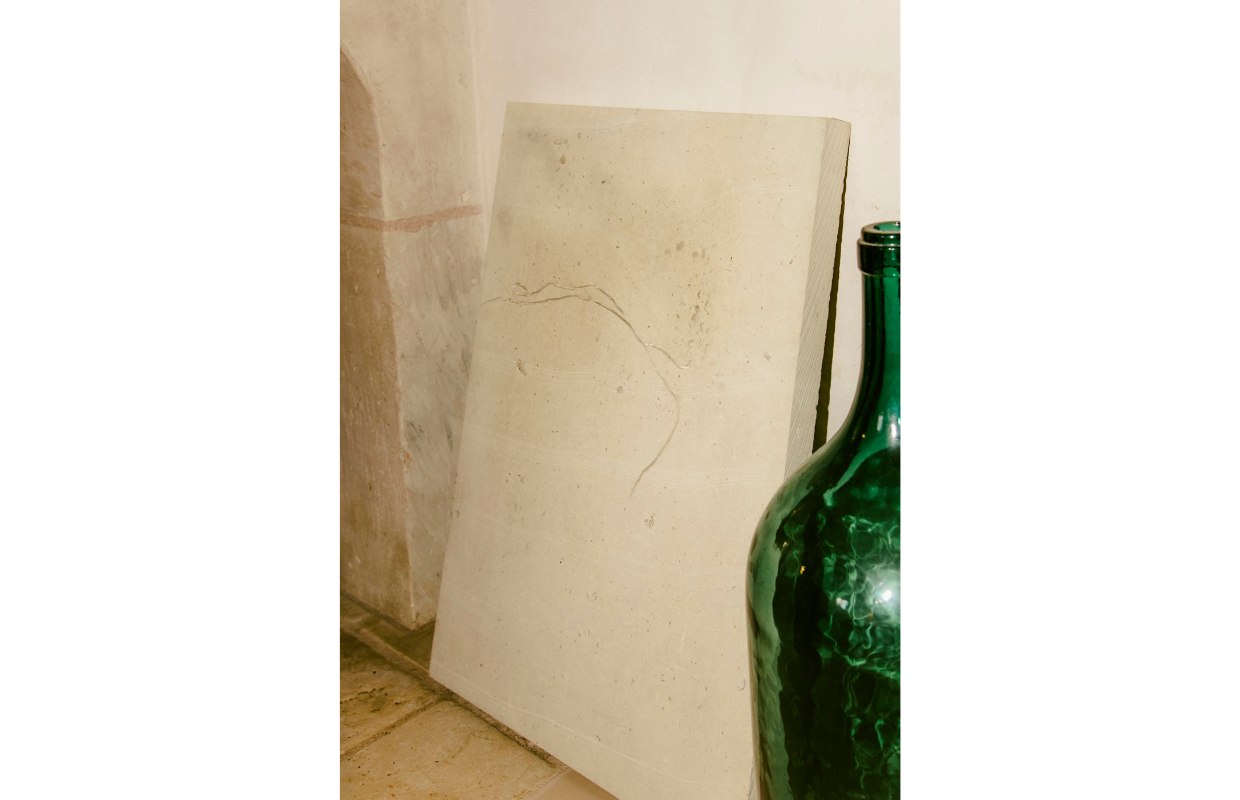
“Corte dei Salentini: Tradition and Sustainability” is present on follow.art from July 25th to November 30th, with all the artworks available for purchase.
Share the post:






